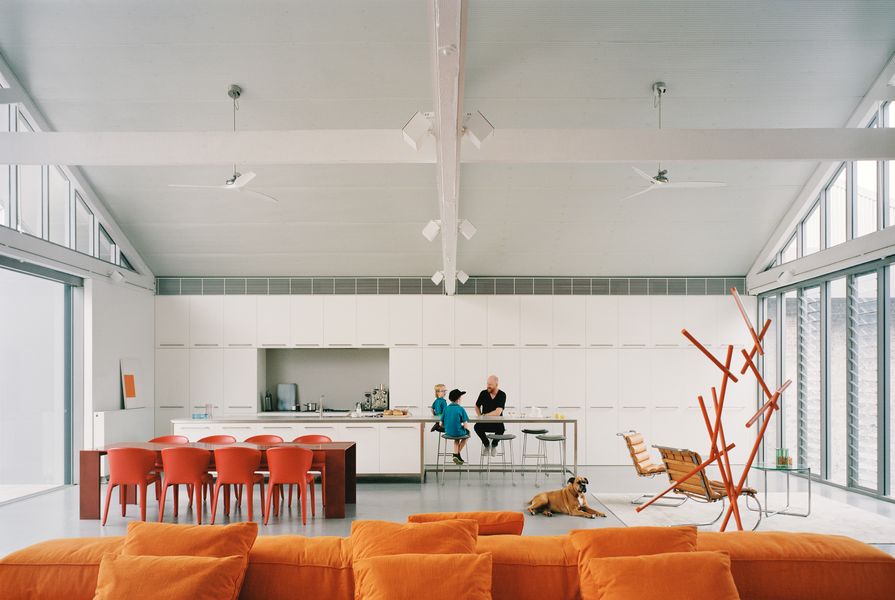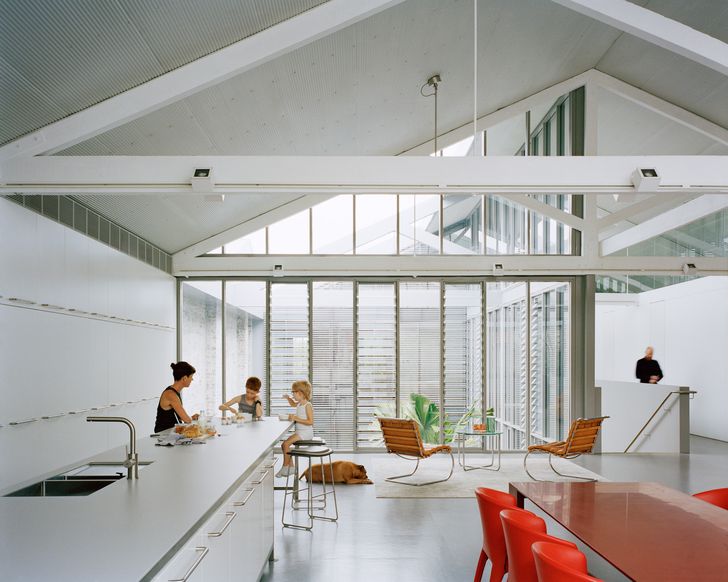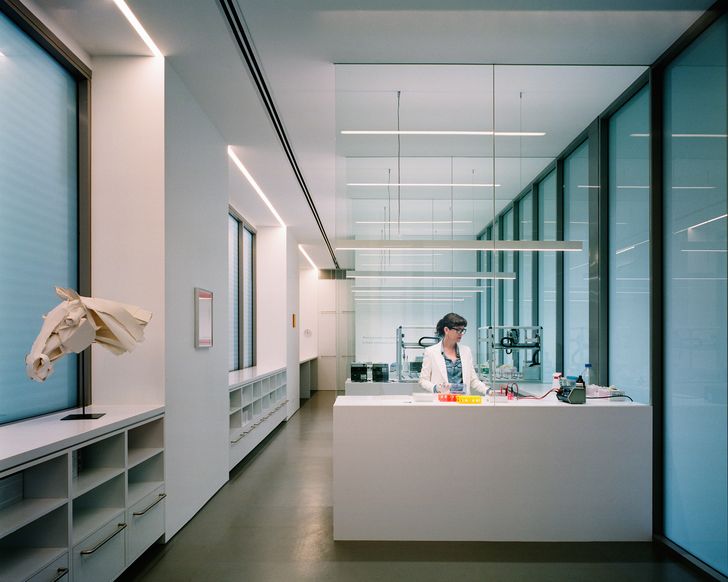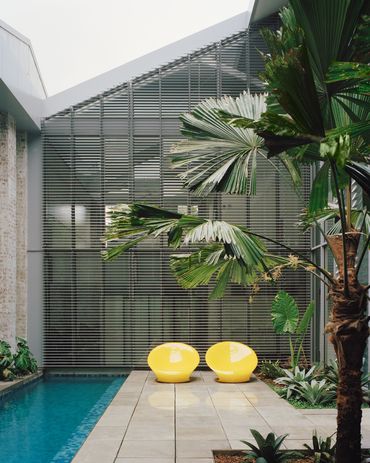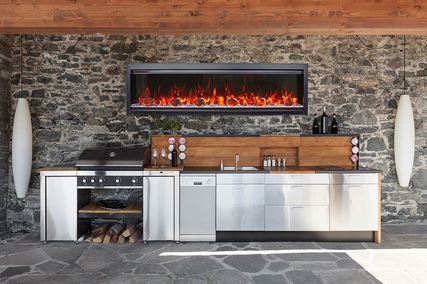Ryan Curnick first encountered Ian Moore Architects’ work in the 1990s. After a decade-long search for a warehouse space to turn into a family home, Ryan engaged Ian to create a house with a “beautiful clean style” that could also function as a home office. Here, Emily Wong chats with Ryan about the process of working with an architect.
Emily Wong: Could you tell me a little about your background?
Ryan Curnick: I grew up in country Western Australia and began my professional life as a mechanical engineer. I almost became an architect, but at the eleventh hour I decided that engineering was a safer bet. I only worked as an engineer for a couple of years before pursuing a career in patent law. Until a couple of years ago I was a partner in a big patent attorney practice. But behind the guise of the patent attorney, I’m a bit of a design geek and a classic-car nut.
EW: Why did you decide to engage an architect?
RC: I think my partner and I had always planned to use an architect for this project. We had previously renovated a terrace house and had used an architect for that, and this place was a much bigger project. I’d always wanted to live in a warehouse and had been hunting for one for more than a decade. The building itself was in pretty good shape but had a long and varied history of use, with the most recent fitout incorporating a set of offices, an art gallery space and a three-bedroom apartment. We needed to solve a multitude of liveability issues including heating, cooling and insulation, and address some oddly sized rooms. When we purchased the building, we had two small children, my partner was finishing a PhD and I was a partner in a patent attorney practice, so from a time perspective we also wanted to engage an architect to manage the build.
Redfern Warehouse by Ian Moore Architects.
Image: Rory Gardiner
EW: How did you discover Ian Moore Architects?
RC: When I first moved to Sydney in the early 1990s, I saw Price O’Reilly House, which Ian designed in Redfern. That was the project that turned me onto him and his practice – and it’s still one of my favourite houses. Dodds House and Davis House, both by Ian’s practice, have aged really gracefully. He has a beautifully clean style that I think fits strongly with my own [personal] aesthetic.
EW: How did you prepare for your first meeting with Ian?
RC: My partner and I (we have quite different tastes) met with five architects before narrowing our selection down to three potential architects. We gave an identical brief and budget to each, but we weren’t too picky about deliverables – we asked the architects to create a fully animated walkthrough if they thought it suited the budget, or simply three sketches on a piece of paper.
EW: What was your brief?
RC: It was a one-pager – you could almost describe it as an accommodation list. We wanted three bedrooms, a guest room if possible, a commercial space for my partner’s laboratory, a pool for our children, an oversize garage for my cars and workshop, and, because my partner is an avid gardener, some decent outdoor and gardening space. That was it.
Seeking work/life balance, the owners’ list-like project brief asked for a lab-cum-home office as well as a pool. Artwork: Anna Wili-Highfield.
Image: Rory Gardiner
EW: Was the result of working with an architect what you expected?
RC: Actually, I think it was better. The builders we chose hadn’t built anything like this before and they were continually amazed by how good the detailing was as well as by how buildable everything was – which makes a big difference. I’m gobsmacked by how well the house has turned out. It’s big and warm, yet easy to cool – and everything works.
Redfern Warehouse by Ian Moore Architects.
Image: Rory Gardiner
EW: Did you have much involvement in the progress on site when the house was being built?
RC: I left professional practice not long after building started, so I was on site a lot. My partner and I rented a house close by so that we could be around not only for the big milestones, but also in case other issues came up. But, as it turned out, there weren’t many. We purposefully put a lot of effort into the design development with Ian to avoid the need to be on site all the time, and as a result there were almost no changes to the design during construction. Which is also something that the builders loved.
EW: What advice would you give to someone who is thinking of using an architect?
RC: The best place to start is to get a sense of what you like. Use design magazines, blogs and social media to find your aesthetic and research studios that are local to you. Find an architect whose style you really like, and trust them. We took our brief down to as little as possible in order to experience Ian’s full effect. I think you will have a happier working relationship with an architect if you can avoid being too prescriptive. No architect wants to feel as if they’ve been asked simply to document an idea you’ve already decided on.
EW: Would you engage an architect again?
RC: Definitely. And I think it’s worth stressing the real benefit of engaging an architect for a renovation. Architect-designed renovations seem to be less constrained by existing floor plans because architects will make bolder, more confident interventions than owners doing their own transformations would. My last point is to stress that detailing is much harder than people think, and something best tasked to an architect.
Read more about Redfern Warehouse here.
Source
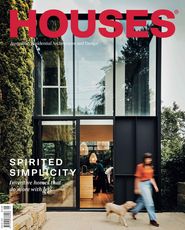
People
Published online: 12 Mar 2021
Words:
Emily Wong
Images:
Rory Gardiner
Issue
Houses, October 2019

